
4-Xtremes – Part 52: Back and forth to a new Xtreme
Series: 4-Xtremes – The World Tour
Templar history and windmills, yellow trams and sweet pastries – and another Xtreme place. The Kammermanns start the Axor for an extended foray through Portugal.
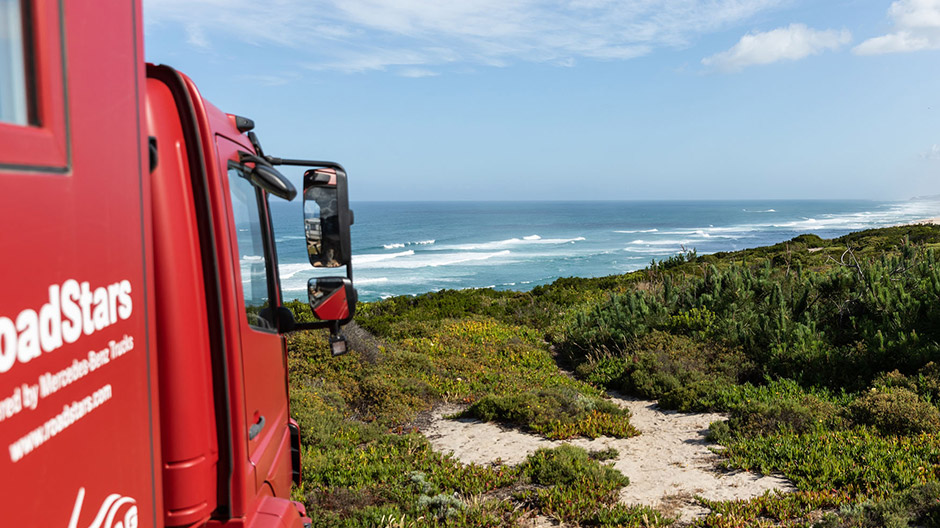
A break by the Atlantic Ocean. Portugal is largely unaffected by tourism, but still has a lot to offer – not least great driving routes.
Sometimes even we forget that we are meant to be on a world tour. But due to ever-changing restrictions, we have not been able to leave Europe for over two years – apart from a quick trip to Tunisia. Within the continent we have pretty much exhausted all the Xtremes that give our tour its name – from the far north of Norway to the very south of the Canaries. But now we are adding a new Portuguese landmark: Cabo da Roca at the westernmost point of mainland Europe.
So how do we reach this cape? From the city of Évora, from where we last reported, we head west in a more or less straight line until we reach a real monument. The Vasco da Gama bridge spans the Tagus river, which is so wide at this point that it looks more like the sea. At around 17 kilometres long, this is one of Europe’s longest bridges and it ends in Lisbon. Naturally, we're not going to miss out on a sightseeing tour of Portugal’s capital. We visit historical squares, wait in the alleys while a yellow tram races around the corner and taste sweet pastéis de nata fresh from the oven.
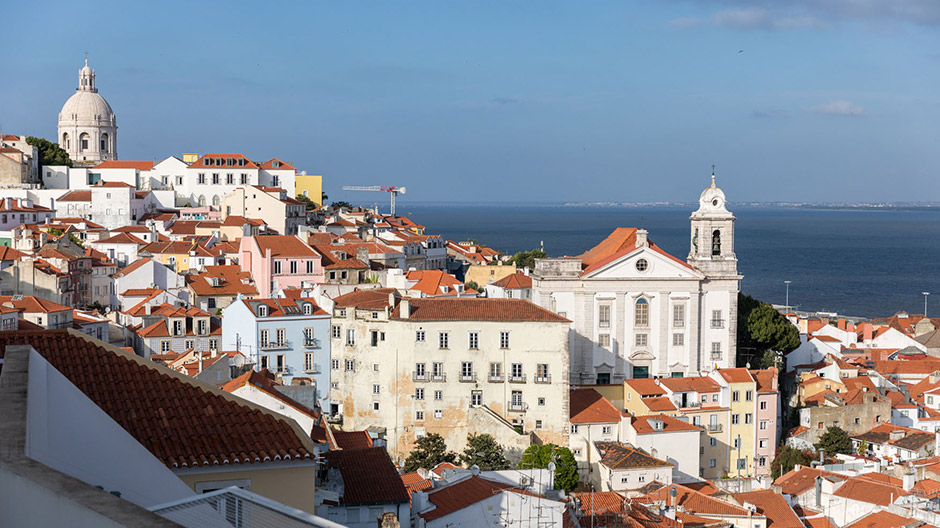
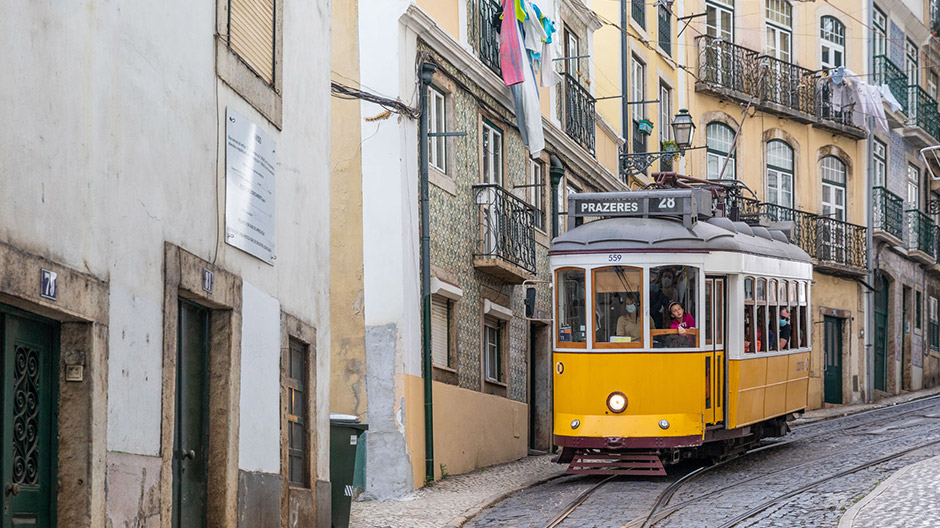

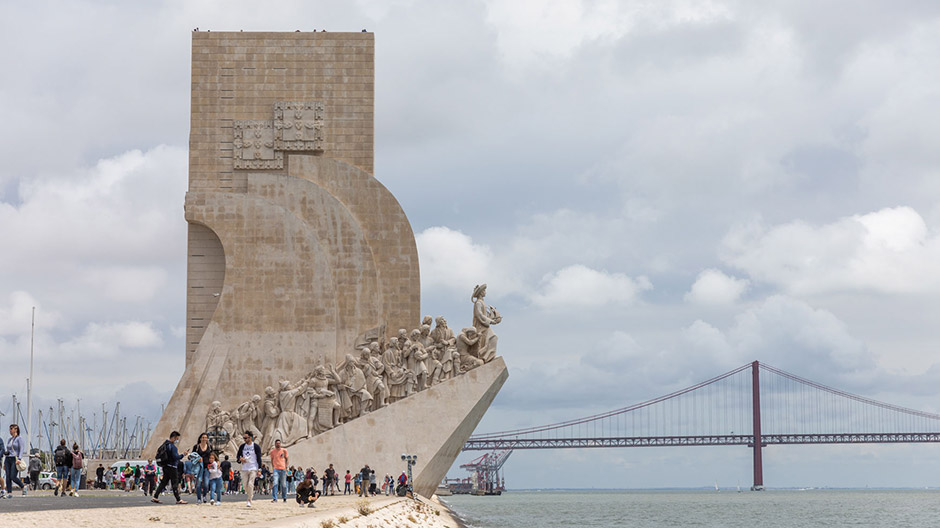
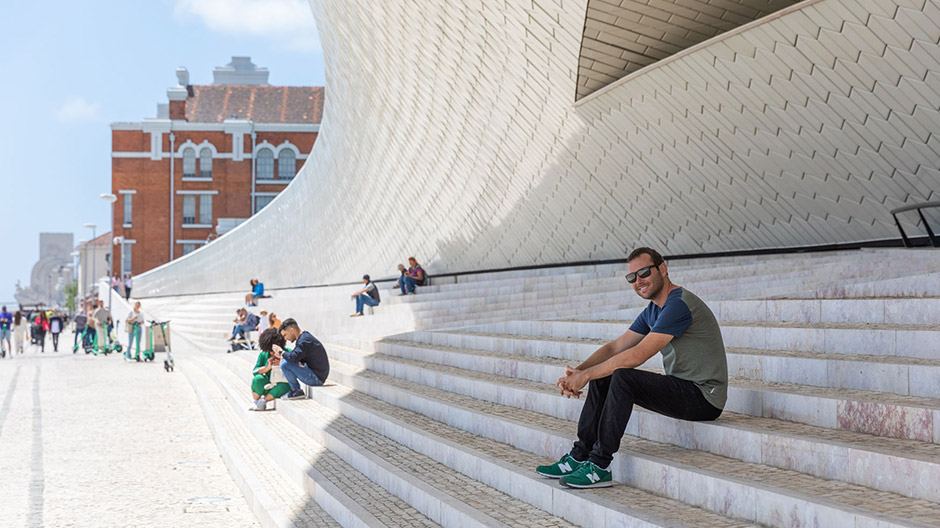
Narrow and winding.
Then it’s back to the Axor and on to the west. It is a good 40 kilometres to Cabo da Roca. The last leg takes us down narrow, twisting roads. We are not the only ones loving this route, many bikers share our opinion. Mike has to drive very carefully and have his foot on the brake early on every bend in case one of them cuts the corner.
The cape is, as such places often are, not so spectacular. It is marked by a simple monument. Right next to it you will find, not surprisingly, the westernmost lighthouse in mainland Europe. Regardless, it is a great feeling to have reached this Xtreme with our indestructible expedition truck. Will we ever see Europe’s easternmost point? Given the current situation, that seems impossible. An unhappy thought.
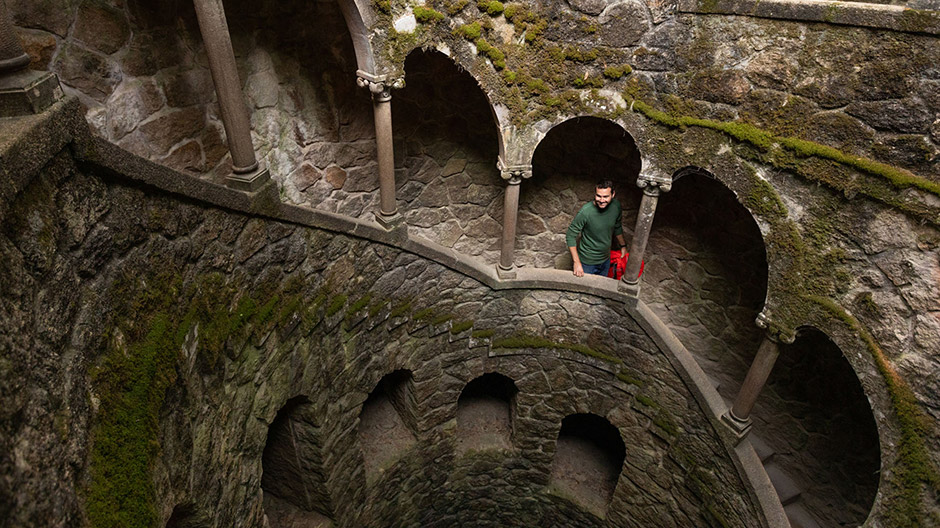
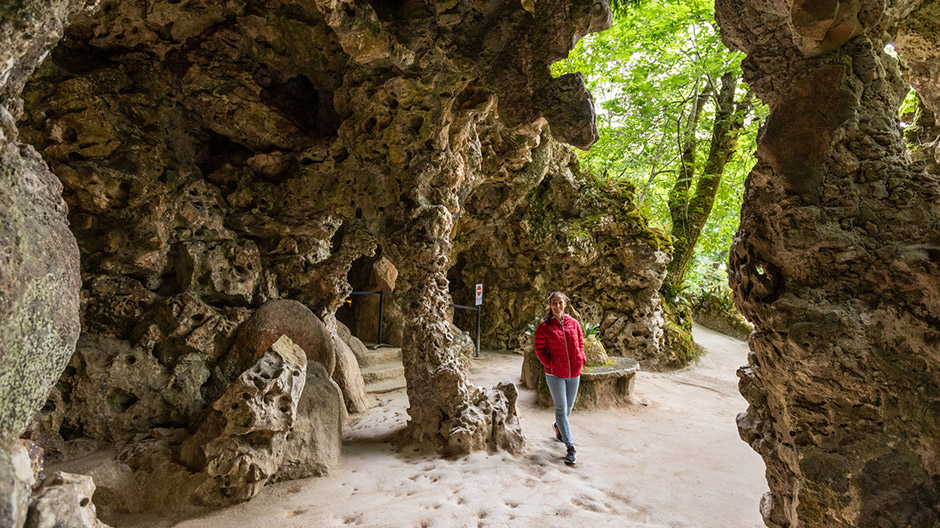
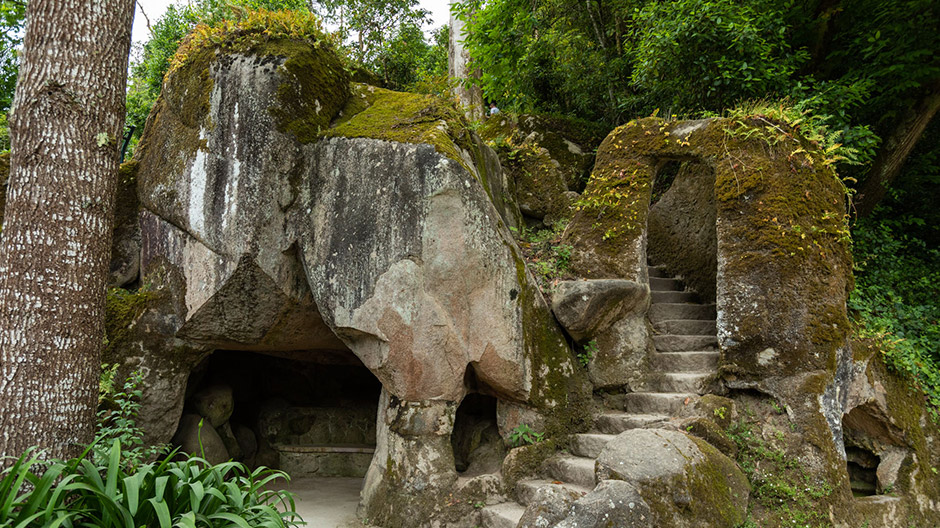
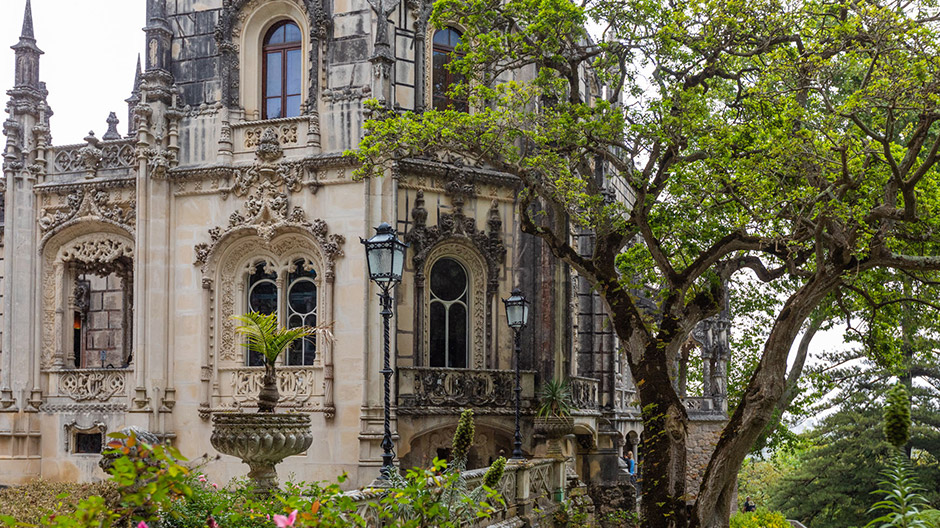
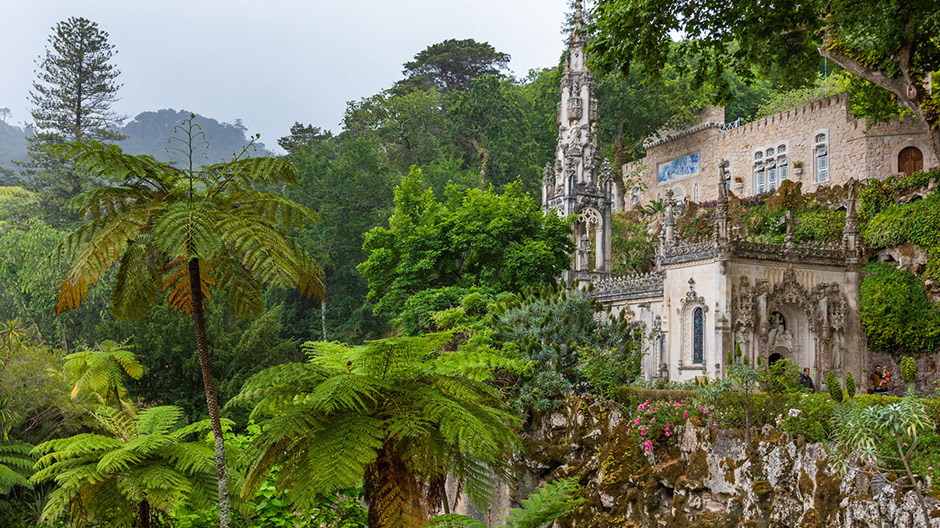
Grottoes, lakes, tunnel systems.
A real highlight is Sintra, less than 20 kilometres northeast of Cabo da Roca. The small town is known for its centuries-old palaces. We particularly like the Quinta da Regaleira, an estate comprising a palace, chapel and a four-hectare park. There are grottoes, lakes, fountains and tunnel systems.
We learn that the symbolism of the buildings is influenced by Freemason mysticism. The Initiation wells are particularly stunning: spiral staircases leading down inverted towers into dry wells decorated with a Templar cross on the floor. It’s all very mysterious. We wouldn't have been surprised if we had suddenly found ourselves in the middle of a ceremony.
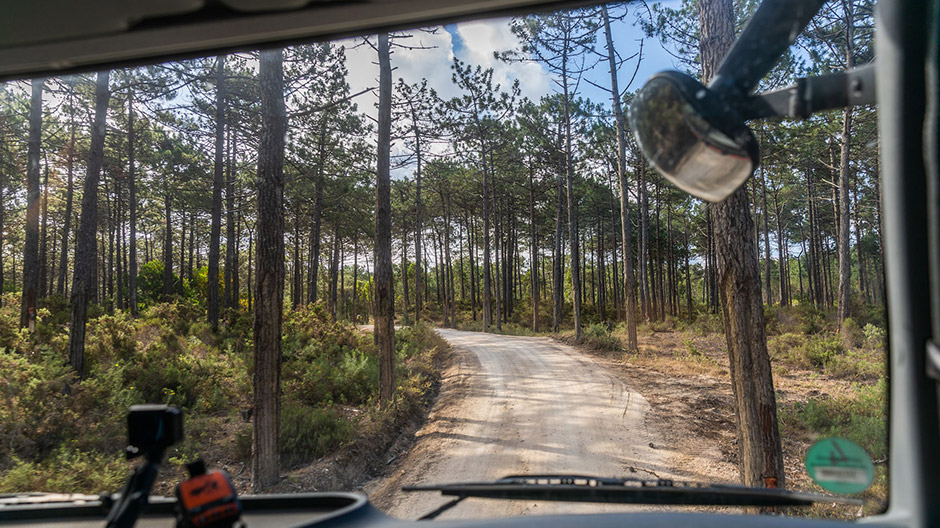
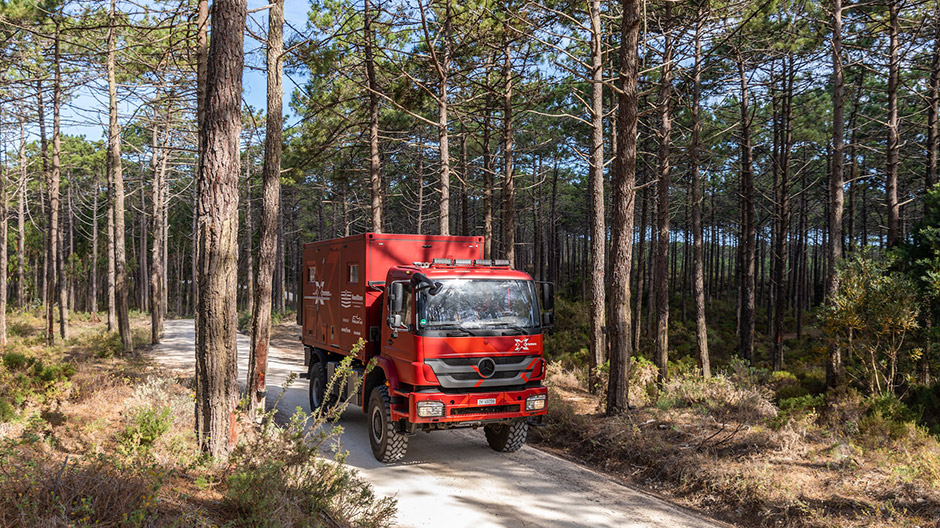
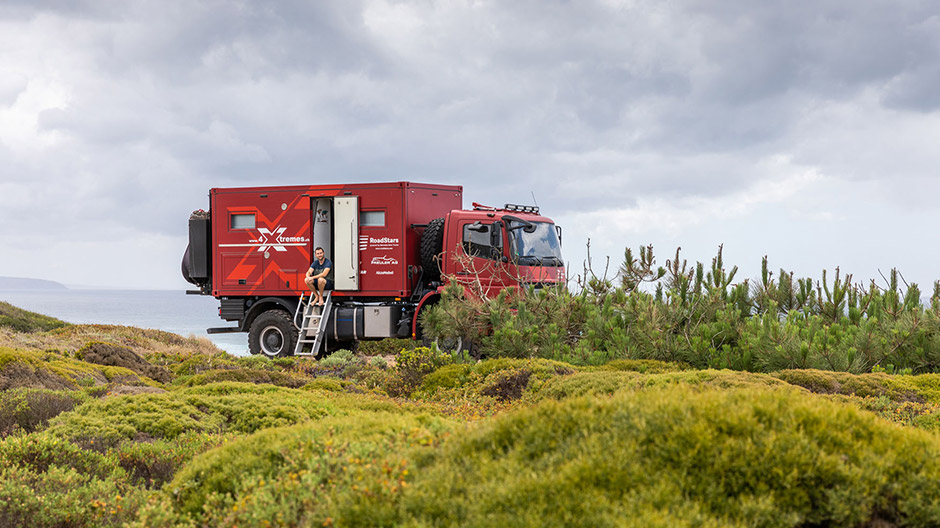
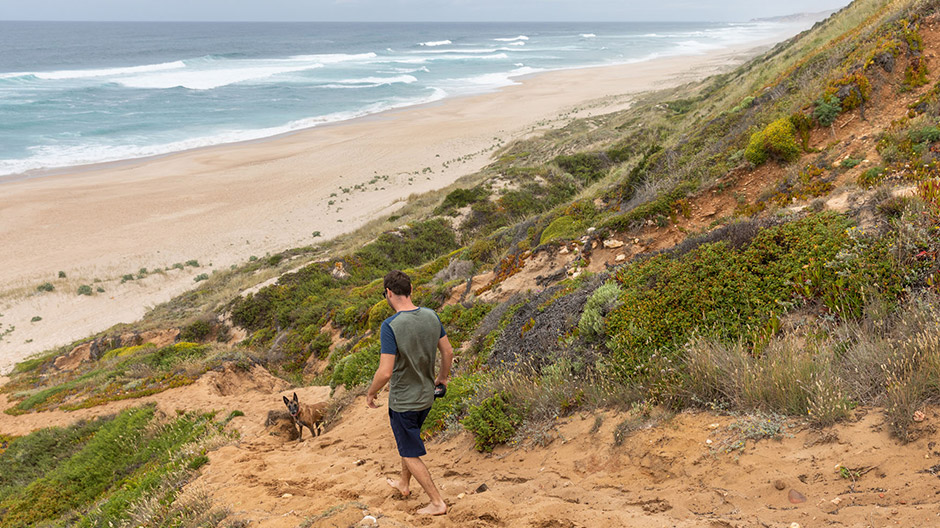

On sandy tracks through pine forests.
Then it’s time to return to nature, empty roads and the sea. A little north of the town of Nazaré, we cross extensive pine forests on sandy tracks until we reach the wild Atlantic coast. Following a heavy rain shower, we walk along the deserted beach.
After the tunnel systems in Sintra, we are back underground a few days later, this time a good way inland. The Grutas Mira de Aire cave group is famous for being the largest known stalactite cave in Portugal. The 683 steps take you more than 110 metres deep into the ground. The cave was formed over 150 million years ago when dinosaurs probably still lived here.
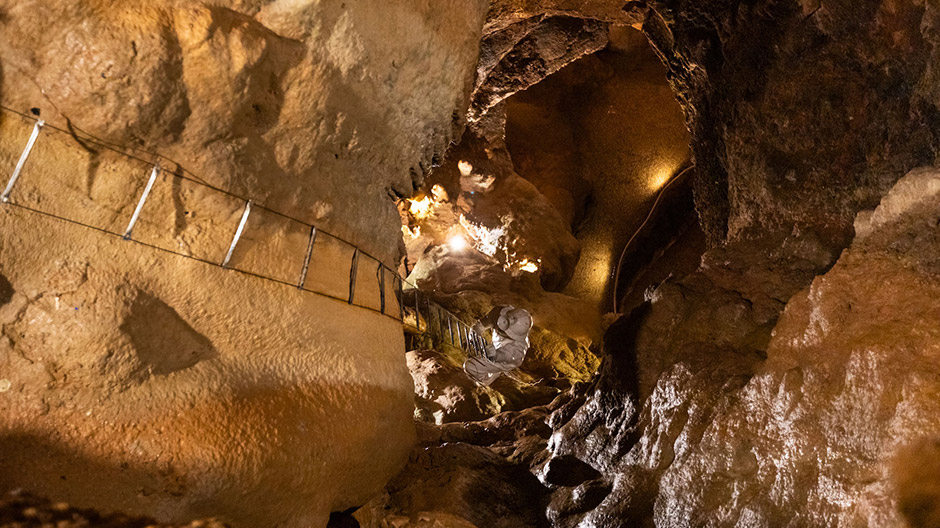
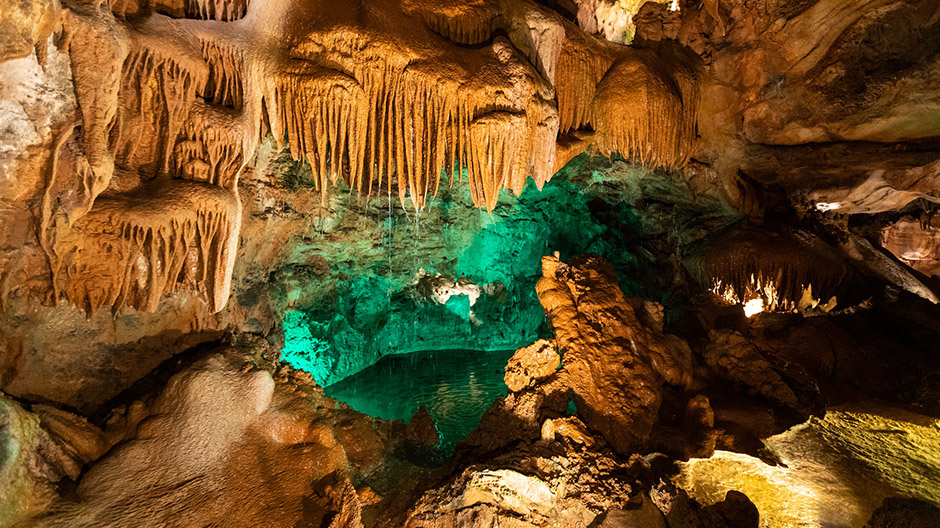
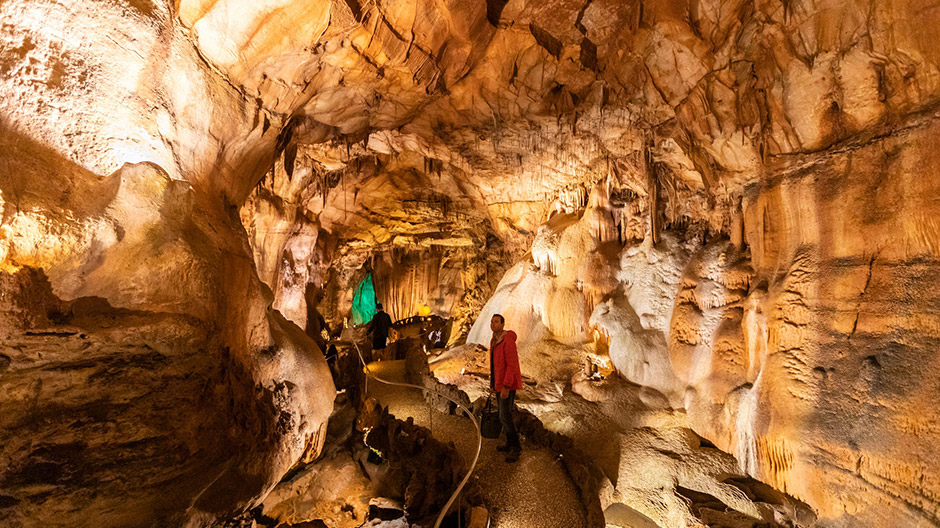
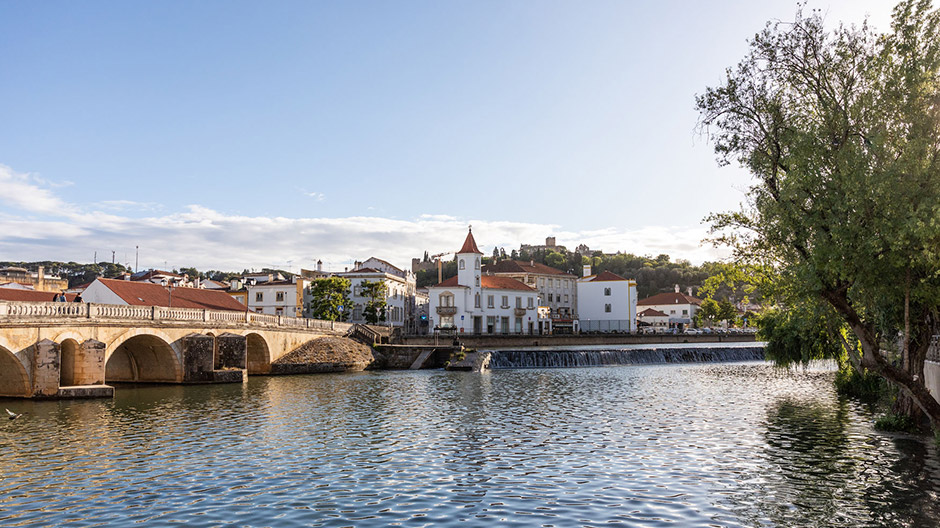
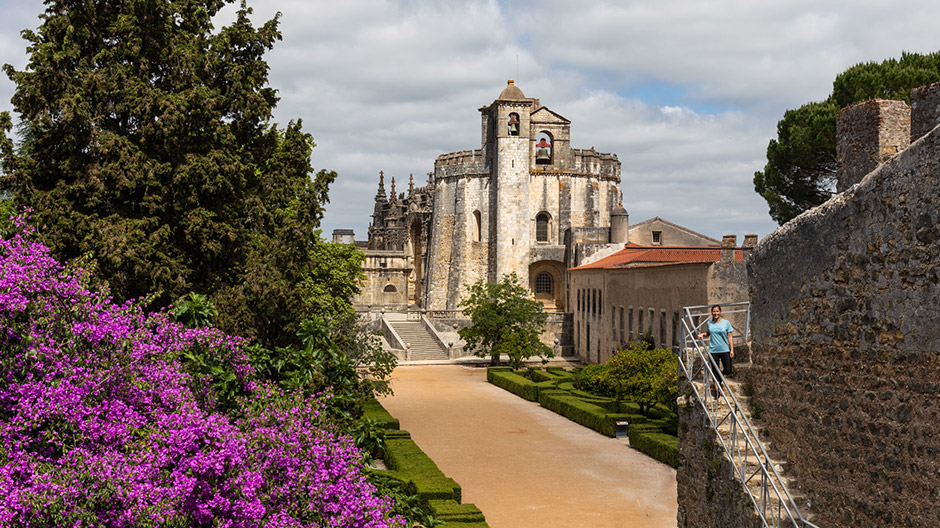
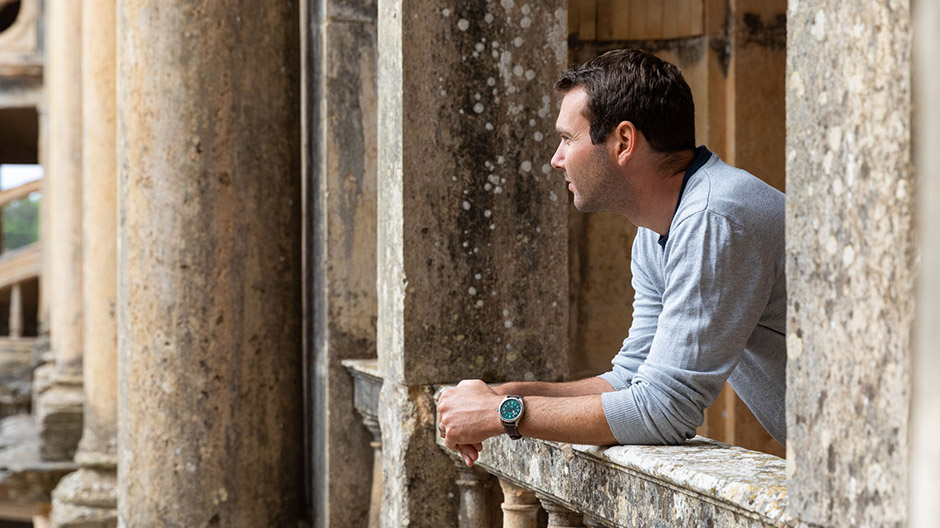
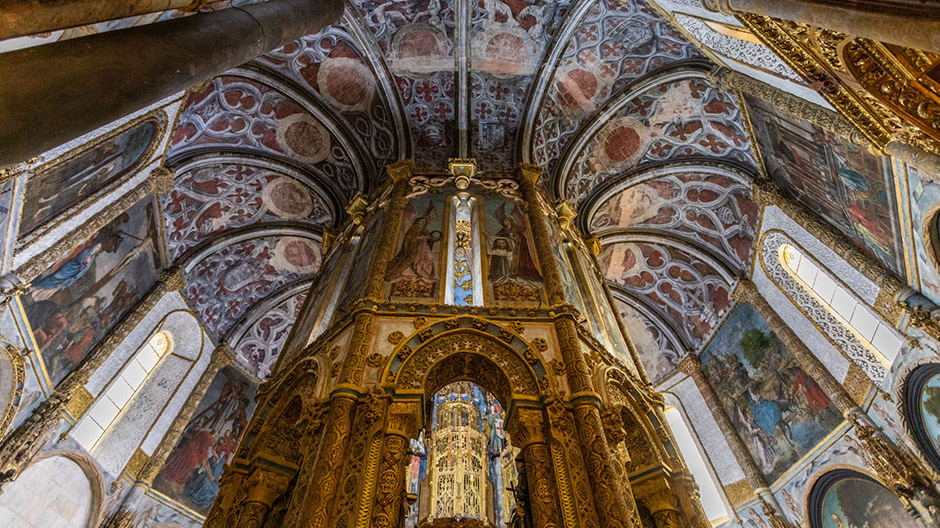
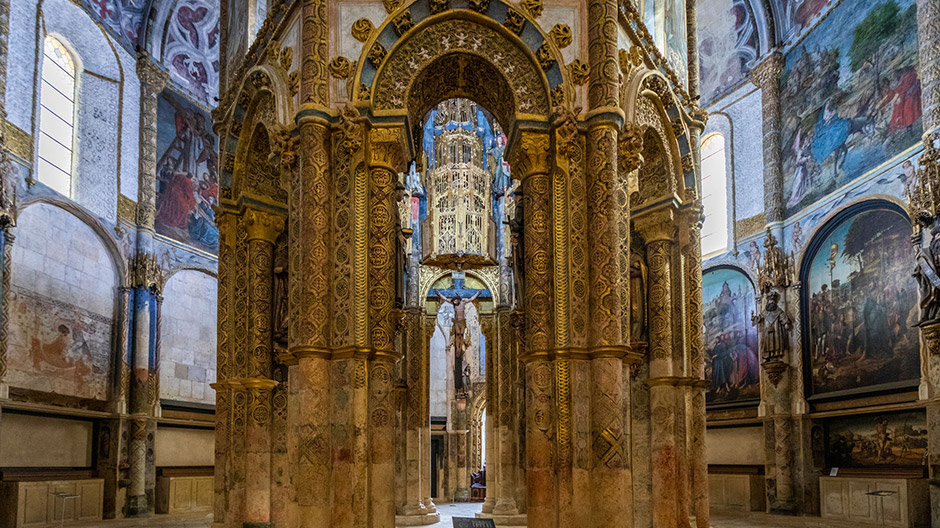
Restaurants fit for a Templar knight.
Portugal is marked by the history of the Templars and the city of Tomar is the most important remnant, located about 50 kilometres further inland from the cave. Just a stone’s throw from the centre, we park on a campsite and visit the Castle of the Knights Templar. It dominates the city and houses a unique round church within its walls. The old town even has authentically knightly restaurants with rustic tables and benches. Food and drinks are served in coarse clay mugs and dishes.
Now, in early summer, the days are very hot in the lowlands. It is not uncommon for temperatures to rise above 30 degrees. So we decide to head higher. It must be breezy and cooler up there where the wind turbines are. We drive along a ridge on the service roads of a wind farm and find a flat spot to camp.

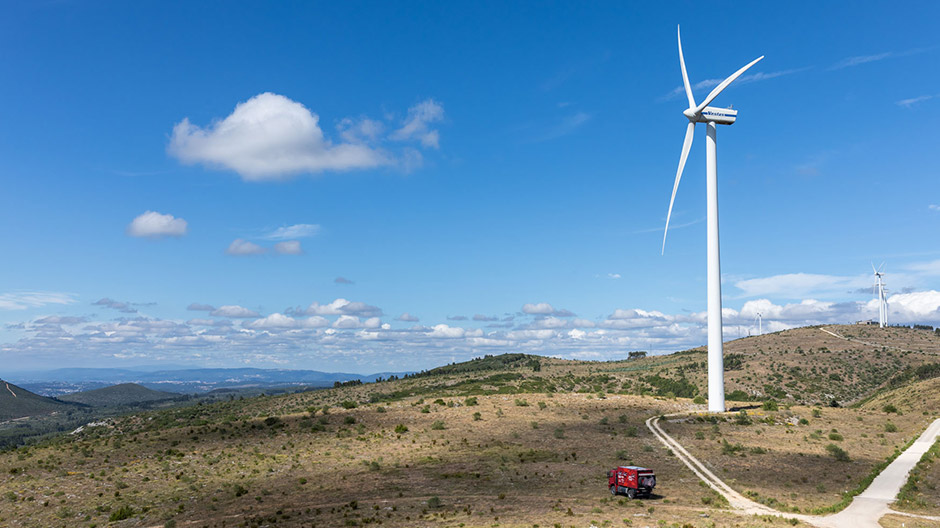
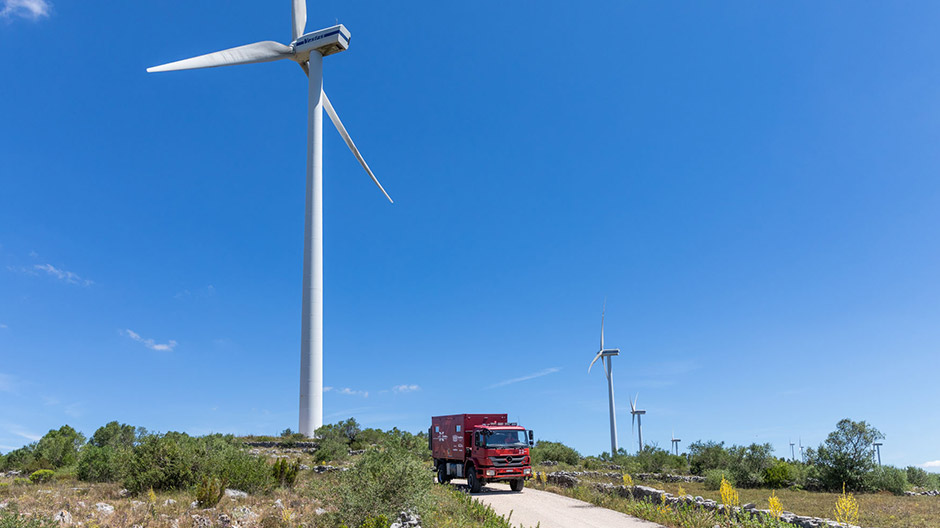
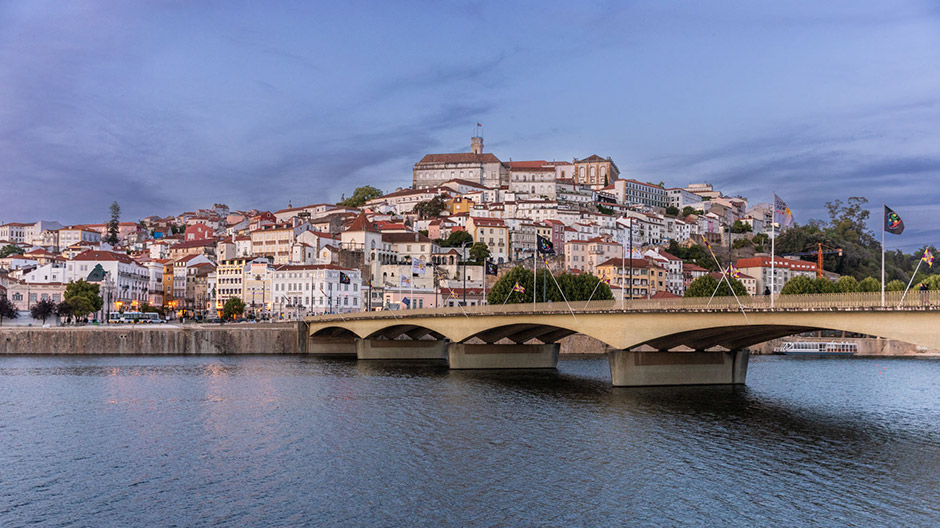
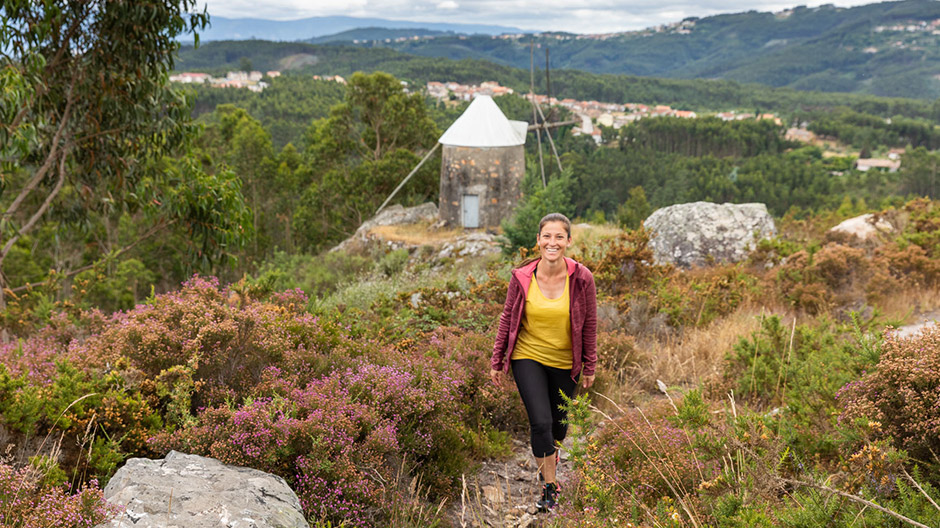
Black robes in the old capital.
Further north, we head for Coimbra. The former capital of Portugal is mainly known for its university. Founded in 1290, it is one of the oldest universities in the world. Here, teachers and students alike wear an unusual traditional uniform: floor-length black robes. We are visiting the city towards the end of a semester so there is much celebrating in the narrow alleys.
From Coimbra, we follow a back road that runs along a river. We wind our way through narrow village streets up to old windmills on a hill. Some of them are still used to grind grain, though not in commercial volumes. The view down into the river valley, over the rolling hills and villages is wonderful. You can see the sea far away and high mountains on the other side. Both are on our upcoming itinerary.
4-Xtremes – The World Tour.
An unparalleled journey.
Andrea and Mike Kammermann have been on tour in their Axor for three years. "4-Xtremes – The World Tour" is the motto of the journey that the two Swiss nationals embarked on in mid-2020 and which they share with the RoadStars community. Keep up to date and don't miss out on any of the stunning destinations visited by the adventurous pair.
You can find the current parts from the “4-Xtremes – The World Tour” series here.
You can find the route of the trip before the crossing to South America here.
Photos: 4-Xtremes




Comment
Please log in to post a comment.
18 comments
goede reis en houd de geschilderde kant boven he' 😊 !! 👍👍
goede reis en houd de geschilderde kant boven he' 😊 !! 👍👍
Bin gespannt auf den nächsten Teil !!
Liebe Grüsse
Andreas
Bin gespannt auf den nächsten Teil !!
Liebe Grüsse
Andreas
Liebe Grüsse von uns
Liebe Grüsse von uns
Lissabon u. die Algarve sind auch immer wieder eine Reise wert, aber euer Bericht zeigt klar auf, dass Portugal tatsächlich noch viel mehr interessantes u. sehenswertes zu bieten hat - danke dafür 👏 und weiterhin eindrucksvolle, sichere Reise 👋
Lissabon u. die Algarve sind auch immer wieder eine Reise wert, aber euer Bericht zeigt klar auf, dass Portugal tatsächlich noch viel mehr interessantes u. sehenswertes zu bieten hat - danke dafür 👏 und weiterhin eindrucksvolle, sichere Reise 👋
Ich wünsche Euch viel Spaß auf Eurer Tour und bin jetzt schon auf neue Abenteuer gespannt.
👍🏼👍🏼👍🏼👍🏼👍🏼👍🏼👍🏼⛟😎🙋♂️
Ich wünsche Euch viel Spaß auf Eurer Tour und bin jetzt schon auf neue Abenteuer gespannt.
👍🏼👍🏼👍🏼👍🏼👍🏼👍🏼👍🏼⛟😎🙋♂️
Echt Wahnsinn, wie ihr es schafft, auf den Fotos nicht nur das Motiv, sondern auch die Stimmung einzufangen! 👌💯
Vielen Dank, daß ihr uns an eurer Reise so teilhaben laßt! 🙏
Echt Wahnsinn, wie ihr es schafft, auf den Fotos nicht nur das Motiv, sondern auch die Stimmung einzufangen! 👌💯
Vielen Dank, daß ihr uns an eurer Reise so teilhaben laßt! 🙏